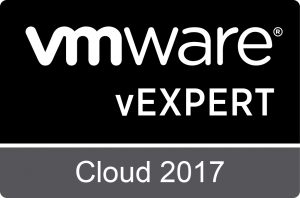First things first: I want to thank everyone who has followed along and supported me during the recent job search. It’s meant a lot to me to know that I was never really alone during it.
A special thank you to all of you who contacted me and acted as “connectors”, connecting me to people, companies, and job opportunities.
During the search, a few people asked me why I kept mentioning my job search on social media. My answer was always the same — every time I mention the job search, someone new contacts me with ideas, suggestions, or to help connect me to a job opportunity I was previously unaware of. In fact, a tweet about my job search is directly responsible for connecting me to my new job. I’ll do a future blog post with more details about how social media helped my job search.
But, none of that is what you came here to read at the moment. You came here to hear about:
My New Job
 I’m very happy to announce that, starting today, I’m joining the team at Virtustream.
I’m very happy to announce that, starting today, I’m joining the team at Virtustream.
For those who aren’t familiar with it, Virtustream is a cloud provider. (And one of the Dell Technologies companies.) Their offerings are designed for enterprises and global IT organizations. While they’re not a “household name” like the “Big Three” in cloud (AWS, Azure, and Google) are, I think Virtustream’s in a great place to get there because of the things that make them different than the Big Three.
The main difference I see is that using any of the Big Three is essentially a do-it-yourself experience. While you can do it all yourself with Virtustream, they also offer a full suite of managed services to choose from. Additionally, they also have offerings specifically built for Enterprises, for Federal, and for Healthcare.
What Will I Be Doing?
In the job posting, the official job title was listed as:
Senior Consultant: Technical Product Marketing
But, yeah, that doesn’t really tell you much about what I’ll actually be doing.
I’ll be in an individual contributor role, working with almost every team within Virtustream to create technical content, both for internal and external use. This will include articles, presentations, white papers, trainings, videos, whiteboards, demos, blog posts, and, well, pretty much any other format that folks would find as an effective way to consume information.
The job looks to be the perfect mix of “everybody already has a good idea of what they need from me” and “go forth to create and define this role for yourself”.
As a big plus, I’ll be getting to work with several folks I’ve known for years now who have not only earned my professional respect, but who I also actually like a lot.
So I’ll still be working with storage and virtualization, but I’ll also be moving that work deeper into the Cloud than I have in the past. Definitely looking forward to it.






